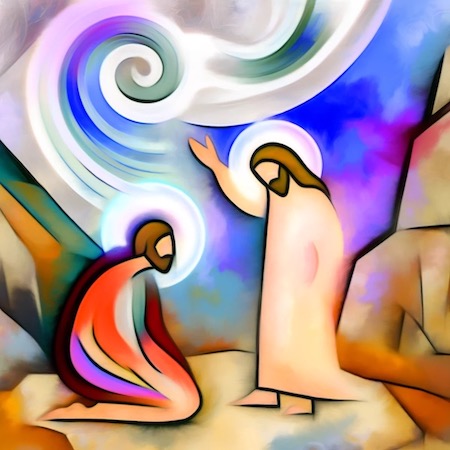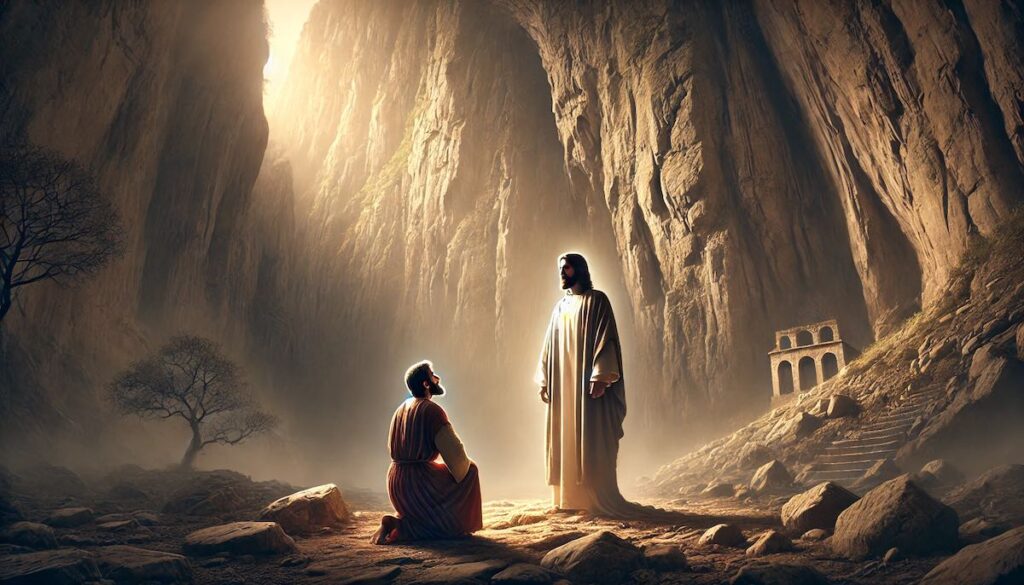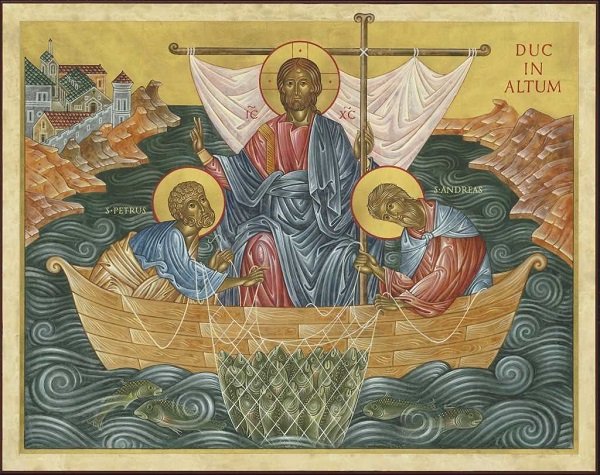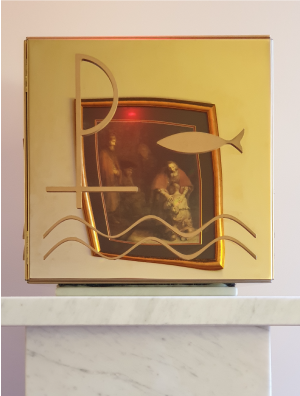In the Gospels, one of the most pivotal moments in the life of Christ is Peter’s confession of Jesus as the Messiah. This event marks a turning point not only in the understanding of Christ’s disciples but also in Jesus’ journey towards His Passion. Pope Benedict XVI reflects on this profound moment in his book Jesus of Nazareth, providing rich insights into the significance of Peter’s confession, the broader context in which it occurs, and its implications for discipleship and Christian faith. This blog post explores these themes, unpacking the layers of meaning behind Peter’s recognition of Christ.
The Context of Peter’s Confession
Peter’s confession occurs in the region of Caesarea Philippi, a site steeped in political and religious history. Situated near the source of the Jordan River, Caesarea Philippi was a sanctuary of the Greek god Pan, a symbol of paganism, and had been established by Herod the Great. The location, chosen by Jesus for this profound revelation, serves as a backdrop for the transition from His public ministry in Galilee to His final journey to Jerusalem and the Cross.
As Benedict explains, this moment marks the beginning of a deeper understanding for the disciples. They are no longer just observers; they are now “on the way” with Christ, witnessing the unfolding of His divine mission. Jesus’ question—“Who do you say that I am?”—is asked while they are literally on the road, symbolising the spiritual journey they must undertake to truly comprehend who He is.
The Common People’s Perception
Before Peter’s confession, Jesus first asks what the people believe about Him. According to the synoptic Gospels, the crowds hold various views. Some believe He is John the Baptist resurrected; others think He is Elijah, Jeremiah, or another prophet. These responses are grounded in the Jewish tradition, which saw the prophets as messengers of God, preparing the way for a future Messiah. However, as Benedict notes, while these opinions are not entirely wrong, they are incomplete: “These various opinions are not simply mistaken; they are greater or lesser approximations to the mystery of Jesus.”
In today’s world, similar perspectives exist. Many see Jesus as a great moral teacher or a religious leader on par with figures like Buddha or Confucius. This view allows people to admire Jesus without truly committing to His teachings. As Benedict observes, this reduces Christ to a mere historical figure, preventing people from understanding His full divine identity and calling.
Peter’s Unique Confession
Luke presents a similar confession, where Peter calls Jesus “the Christ of God” (Lk 9:20),1 while in Mark, he simply proclaims, “You are the Messiah” (Mk 8:29).2 In all three accounts, Peter’s confession marks a decisive moment, one that, as Benedict explains, is inseparable from Jesus’ subsequent revelation of His Passion. Jesus makes it clear that being the Messiah means suffering, death, and resurrection—a reality that Peter struggles to accept.
A Turning Point in Discipleship
Peter’s response, however, stands in marked contrast to the general public’s perception. In Matthew’s Gospel, Peter declares, “You are the Christ, the Son of the living God” (Mt 16:16).3 Benedict points out that Peter’s confession reveals not only his recognition of Jesus as the Messiah but also an understanding that surpasses the expectations of a political or military saviour. Peter acknowledges Jesus’ unique relationship with God, even if he does not yet fully grasp the implications of the Cross.

After Peter’s confession, Jesus shifts His teaching focus. He begins to explain the true nature of His mission, preparing the disciples for the coming Passion. As Benedict states, “Jesus’ teaching about losing one’s life in order to find it is linked to the mystery of the Cross.” Peter’s declaration sets the stage for this deeper understanding, but it also reveals the limitations of his faith at this point.
Peter’s immediate reaction to Jesus’ prediction of His suffering and death is one of protest. He rebukes Jesus, saying, “God forbid it, Lord! This must never happen to you” (Mt 16:22).4 In response, Jesus sharply rebukes Peter, calling him “Satan” for trying to prevent what is divinely ordained. Benedict explains that Peter’s confession, while profound, is still incomplete because it lacks an understanding of the Cross. Only after the Resurrection will Peter fully comprehend the significance of his words.
The Revelation of the Transfiguration
The Gospel accounts place the Transfiguration shortly after Peter’s confession, serving as a divine confirmation of Jesus’ identity. As Benedict notes, the Transfiguration deepens the disciples’ understanding of Jesus by linking His divine glory with the suffering He is about to endure. On the mountain, Jesus is revealed as the Son of God, affirmed by the voice of the Father and the appearance of Moses and Elijah, representing the Law and the Prophets.
This moment confirms Peter’s confession but also points to the necessity of the Cross. The Transfiguration is a glimpse of the glory that will follow Jesus’ Passion, a reminder to the disciples that the path to true discipleship involves following Jesus to the Cross. As Benedict explains, “The story of the Transfiguration interprets Peter’s confession and takes it deeper, while at the same time connecting it with the mystery of Jesus’ death and Resurrection.”
The Significance of Peter’s Confession for Today

Peter’s confession of Jesus as the Christ remains a central element of Christian faith. It challenges believers to move beyond seeing Jesus as merely a historical figure or moral teacher and to recognise Him as the Son of God, whose mission culminated in the Cross and Resurrection. As Benedict reminds us, understanding Jesus’ identity is inseparable from the reality of discipleship: to know Christ is to follow Him on the way of the Cross.
Today, Peter’s confession invites us to examine our own understanding of Jesus. Do we, like the crowds, see Him as just another teacher, or do we, like Peter, recognise Him as the Christ, the Son of the living God? And are we prepared to follow Him fully, even when that path leads to suffering and sacrifice?
Conclusion
Peter’s confession of Jesus marks a significant milestone in the Gospels and in the journey of discipleship. As Pope Benedict XVI illuminates, this moment is more than a declaration of faith; it is a revelation that calls for a deeper understanding of Jesus’ identity and mission. Peter’s journey, like our own, is one of growth and discovery, moving from an initial recognition of Christ to a fuller understanding of His death and resurrection. In acknowledging Jesus as the Messiah, the Son of the living God, Peter lays the foundation for the faith that continues to guide the Church today.
See the other chapter reviews of the first volume on Jesus of Nazareth here.
Footnotes
- And he said to them, “But who do you say that I am?” And Peter answered, “The Christ of God.” ↩︎
- And he asked them, “But who do you say that I am?” Peter answered him, “You are the Christ.” ↩︎
- Simon Peter replied, “You are the Christ, the Son of the living God.” ↩︎
- And Peter took him and began to rebuke him, saying, “God forbid, Lord! This shall never happen to you.” ↩︎



